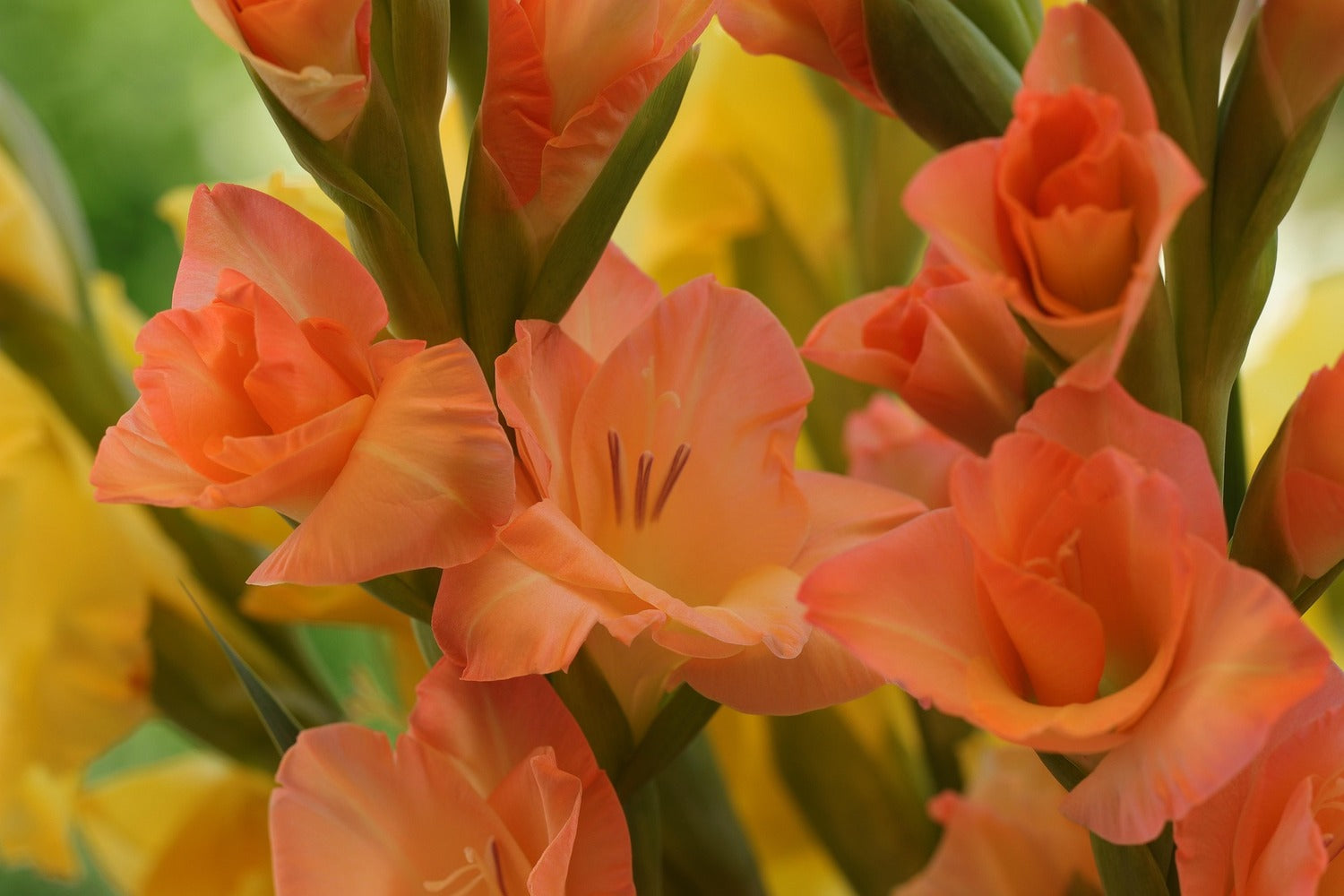Have you ever been frustrated when pre-cooled bulbs result in stunted growth? While our pre-chilled bulbs offer a convenient way to plant, you still need to apply planting and care strategies for bulbs to grow. We're sharing some proven techniques that help pre-chilled flower bulbs create stronger roots, resulting in a thriving floral display.
Techniques That Help Pre-Chilled Flower Bulbs Create Stronger Roots
Pre-chilled flower bulbs develop stronger root systems when planted using proper techniques that address their fundamental growing needs. Key practices include using well-draining soil enriched with compost and planting at 2-3 times the bulb's height. Root development also benefits from consistent moisture, balanced fertilizer, organic mulch, and pest control.

More than getting pre-cooled bulbs, knowing what to do next helps you get healthy blooms and sturdier plants.
|
Factor |
Steps to Take |
|
Good soil |
Use well-draining soil mixed with compost |
|
Quality bulbs |
Select firm, healthy, pre-cooled flower bulbs |
|
Right planting depth |
Plant bulbs 2-3 times their height deep |
|
Proper spacing |
Leave adequate space between bulbs |
|
Consistent moisture |
Water regularly without overwatering |
|
Fertilization |
Apply balanced fertilizer at planting |
|
Mulching |
Add 2-3 inches of organic mulch |
|
Pest protection |
Shield from rodents and insects |
1. Building the Foundation of Growing Pre-Chilled Flower Bulbs
The right soil composition and bulb quality play a direct role in how your flowers grow and how healthy they become indoors or outdoors.
Ideal Soil Composition
The right soil provides the nutrients, drainage, and aeration pre-chilled bulbs need to thrive.
- Amend heavy clay soils with organic matter like compost, peat moss, or well-rotted manure to improve drainage and aeration.
- For sandy soils, incorporate organic matter to enhance water retention and nutrient availability.
- Aim for a slightly acidic to neutral soil pH (6.0-7.0), which contributes to nutrient cycling and soil health.
Quality Pre-Chilled Flower Bulbs
Healthy, properly chilled bulbs set the stage for vigorous growth and abundant blooms.
- Inspect bulbs for any signs of mold, rot, or soft spots.
- Check if the bulbs are firm and free from blemishes.
- Purchase from reputable suppliers who guarantee the quality and proper handling of their pre-chilled bulbs.
2. Planting Techniques for Optimal Root Development
Paying attention to how deep you plant, bulb placement, watering, and specific steps for using containers can help pre-chilled flower bulbs send down strong roots and grow better.
Right Depth and Spacing
The correct planting depth and adequate spacing allow the roots of pre-cooled bulbs to expand unhindered.
- As a general rule, plant bulbs at a depth roughly two to three times their height, measuring from the bulb's base.
- Space bulbs according to the specific variety's mature size, typically 4-6 inches apart for smaller bulbs and 6-12 inches for larger ones.
- When planting in clusters, provide enough space between individual bulbs to avoid root competition.

Proper Bulb Orientation
Orienting the bulb correctly is one of the best ways to help the shoot grow upwards towards the light and roots grow downwards into the soil.
- Plant bulbs with the pointed end facing upwards, as this is where the new shoot will emerge.
- If you're uncertain which end is up (especially with flatter bulbs like Anemone or Ranunculus), plant them on their broadest, flattest side.
- Handle bulbs gently to avoid damaging the basal plate (where roots emerge) or any existing sprouts.
Initial Watering
Immediate watering after planting helps settle the soil around the bulb and provides the initial moisture needed for root establishment.
- Water thoroughly immediately after planting, keeping the soil moist down to the depth of the bulbs.
- Only water again if the soil starts to feel dry.
- Consider using a soaker hose or drip irrigation for slow, deep watering.
Container Planting Specifics
Container planting requires special considerations for proper drainage and nutrient availability in a confined space.
- Use pots with ample drainage holes to prevent waterlogging.
- Set the container in a cool, sheltered spot for several weeks before moving to a sunnier area.
- Keep containers large enough to accommodate mature root systems.
3. Applying Post-Planting Care to Nurture Roots
Paying attention to moisture, nutrients, mulch, and protection will give your bulbs the best chance to develop healthy roots and grow well.
Consistent Moisture
Maintaining consistent soil moisture contributes to active root growth and nutrient uptake, especially during critical growth periods.
- Monitor soil moisture regularly, especially during dry spells and as the plants begin to emerge and grow.
- Avoid soggy soil and improve drainage if water puddles stay for several hours.
- Avoid light watering, which promotes shallow root systems.
Strategic Fertilization
Providing appropriate nutrients supports the development of strong, healthy roots of pre-chilled bulbs.
- Apply a balanced, slow-release granular fertilizer.
- Avoid high-nitrogen fertilizers, which can encourage leafy growth instead.
- For established plants, consider a light application of bone meal or a low-nitrogen, high-phosphorus fertilizer in the fall or early spring to support bulb health.
Mulching for Root Health
Mulching helps regulate soil temperature, retain moisture, suppress weeds, and protect the delicate root systems.
- Apply a 2-4 inch layer of organic mulch, such as wood chips or shredded leaves.
- Keep mulch a few inches away from the stems of the plants to prevent moisture buildup.
- Check mulch often to make sure it isn’t creating soggy conditions near the bulbs.
Protection from Pests and Disturbances
Safeguarding bulbs from pests and physical disturbances promotes uninterrupted growth and long-term health.
- Implement physical barriers, like chicken wire or cages, for areas prone to digging animals.
- Consider using pest repellents or incorporating plants known to deter bulb pests.
- Avoid planting bulbs in high-traffic areas where they might be accidentally stepped on or disturbed.
Related Questions
Why Is Chilling Important for Root Development?
Chilling flower bulbs is necessary because bulbs, such as tulips and daffodils, require cold temperatures to trigger root growth. By giving these bulbs a proper chill period, bulbs think winter has passed, prompting roots to form before shoots appear.
What Are the Common Types of Pre-Chilled Bulbs?
The most common pre-chilled bulbs include tulips, daffodils, hyacinths, and muscari. If you're planting daffodils in the south, you might consider using pre-chilled bulbs. Compared to pre-chilled bulbs, regular tulips need a winter chilling period to perform well, especially in regions with mild winters where it does not get cold enough.
How to Save Pre-Cooled Bulbs That Are Not Developing Strong Roots?
If your pre-cooled bulbs aren't developing strong roots, improve drainage while adjusting watering to maintain consistent soil moisture. Apply a balanced, low-nitrogen fertilizer and add compost to improve soil structure that encourages root growth.
Conclusion
With these root growth techniques, you can enjoy stronger plants and brighter blooms using pre-chilled bulbs. You’ll see the difference in your garden and spend less time worrying about weak growth. Start with our pre-chilled flower bulbs for stronger roots and beautiful flowers.


